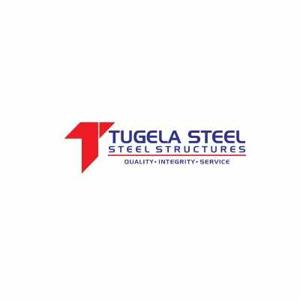The Strength Behind Industrial Steel Structures
When it comes to creating expansive, resilient spaces, industrial steel structures lead the way. These buildings, often used for factories, warehouses, and distribution centers, require materials that can withstand heavy loads, harsh conditions, and the test of time. Steel’s remarkable tensile strength makes it an ideal choice, allowing for wide-open interiors without the need for excessive support columns. This flexibility is invaluable in industrial settings, where large machinery and dynamic workflows demand unobstructed space.
Beyond strength, industrial steel structures offer unparalleled durability. Unlike traditional materials such as wood or concrete, steel resists weathering, pests, and fire, reducing maintenance costs and ensuring longevity. In an era where industries must adapt to technological advancements and shifting market needs, the ability to construct robust yet adaptable buildings is a game-changer. The modular nature of steel also allows for future expansions, making it a forward-thinking investment for businesses aiming to scale.
Commercial Steel Buildings: Blending Form and Function
While industrial applications highlight steel’s raw power, commercial steel buildings showcase its versatility in design. These structures—ranging from retail centers to office towers—combine practicality with aesthetic appeal, catering to businesses that need to make a statement. Steel’s malleability allows architects to craft bold, modern facades, incorporating curves, angles, and expansive glass elements that elevate a building’s visual impact.
The rise of commercial steel buildings reflects a broader trend toward efficiency in construction. Prefabricated steel components, manufactured off-site and assembled quickly, reduce project timelines and labor costs. This speed is a boon for businesses eager to establish a presence in competitive markets. Additionally, steel’s lightweight nature compared to concrete means foundations can be less extensive, further lowering expenses without compromising stability. For developers and owners, this balance of cost, speed, and style is a compelling reason to choose steel.
Sustainability and Steel: A Greener Future
One of the most captivating aspects of steel in modern construction is its contribution to sustainability. Both industrial steel structures and commercial steel buildings benefit from steel’s eco-friendly properties. As one of the most recyclable materials on the planet, steel can be repurposed endlessly without losing its integrity. This circularity reduces the demand for virgin resources and minimizes waste, aligning with global efforts to combat climate change.
Moreover, steel buildings can be designed for energy efficiency. Advanced insulation systems, reflective coatings, and strategic window placements enhance thermal performance, lowering heating and cooling costs. In industrial settings, where energy consumption is often high, these features make a significant difference. Similarly, commercial steel buildings can achieve green certifications, appealing to environmentally conscious tenants and customers. The marriage of sustainability and functionality positions steel as a material of the future, capable of meeting both economic and ecological goals.
Challenges and Innovations in Steel Construction
Despite its many advantages, working with steel is not without challenges. Corrosion, for instance, remains a concern, particularly in humid or coastal environments. However, innovations such as galvanized coatings and stainless steel alloys have largely mitigated this issue, ensuring that industrial steel structures and commercial steel buildings remain resilient in diverse climates. These advancements reflect the construction industry’s commitment to refining steel’s potential.
Another hurdle is the initial cost of steel, which can be higher than some alternatives. Yet, this expense is often offset by long-term savings in maintenance, energy efficiency, and durability. Additionally, ongoing research into lighter, stronger steel variants promises to further reduce costs and expand applications. The evolution of steel construction is a testament to human ingenuity, turning challenges into opportunities for growth and improvement.
The Future of Steel in Industry and Commerce
Looking ahead, the role of steel in shaping industrial and commercial landscapes is poised to grow. Urbanization and the expansion of global trade will drive demand for industrial steel structures capable of supporting complex supply chains. Meanwhile, the push for vibrant, sustainable cities will fuel the creation of commercial steel buildings that inspire and endure. Architects and engineers are already experimenting with hybrid designs, blending steel with other materials to achieve new heights of creativity and performance.
The adaptability of steel ensures its relevance in an uncertain future. Whether accommodating renewable energy installations or integrating smart building technologies, steel structures offer a foundation for progress. As industries evolve and businesses redefine their physical spaces, steel will remain a steadfast ally, bridging the gap between imagination and reality.



Write a comment ...